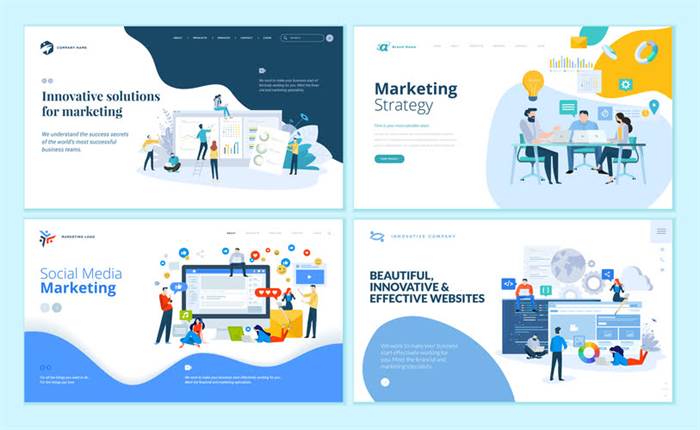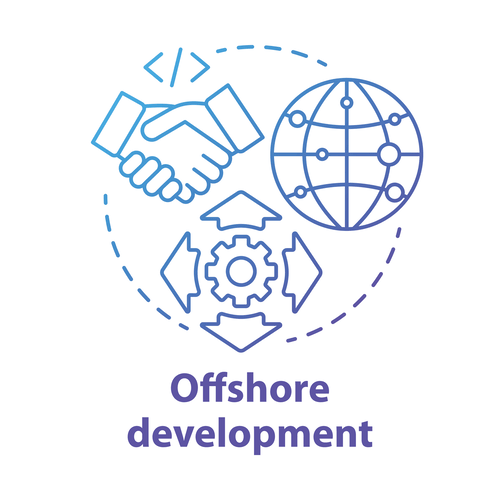Before this will happen, the client must grant entry for the sharing of data, usually via a web-based consent form following a terms and circumstances settlement. Open banking has the potential to extend financial inclusion by making it simpler for underserved populations to entry monetary companies. Open banking permits third-party providers to entry customer data, which enables the development of tailored monetary services and products that cater to specific wants and preferences.
Ultimately, open banking permits banks and third-party service providers to supply a more customized and streamlined experience to their prospects. When it’s widely enacted in the U.S., it will empower shoppers to take control of their money and help them make extra knowledgeable monetary selections. One advantage of open banking is the ability to attach information (via APIs) from several accounts to find a way to effectively share between financial corporations, consumers, and the third-party cost service providers. This has slowly been reshaping client expertise and the aggressive panorama of the banking trade, due, partially, to disruptions from third-party suppliers. Companies that work within open banking infrastructures make their cash in numerous ways. For example, they may cost a subscription payment for merchants to use account information companies by way of apps.

Customers have limited options for sharing their information with third parties, and information entry is commonly restricted to the bank’s closed ecosystem of service suppliers, limiting the variety of options out there and stifling competitors and innovation. Open banking differs from conventional banking by emphasizing data sharing, competitors, and customer empowerment within the monetary providers industry (FSI). Innovative fintech companies actively search entry to individuals’ financial data to provide them with tailor-made and improved monetary providers. Simultaneously, conventional banks, recognising the business opportunity, have taken the initiative to develop services that enable their clients to share their knowledge securely. In financial services, open banking allows for financial data to be shared between banks and third-party service providers via the usage of software programming interfaces (APIs).
Enhanced Buyer Experience
Look no additional than folks with skinny or no credit score histories, corresponding to retirees with out debt or new immigrants, who face the next threat of being rejected for brand spanking new loans. Open banking can resolve that downside by allowing people to prove they’re creditworthy in different methods — for example, by giving lenders entry to your payroll information, your history of normal hire funds or your total cashflow. Finally, it can be useful to engage with different stakeholders in the industry, such as partners, banks, and fintechs, to share data and best practices. This can also assist establish potential collaboration alternatives that would additional enhance treasury operations via open banking. Many consumers might lack awareness or understanding of open banking ideas, rights, and risks. Providing complete education, sources, and help to empower consumers to make knowledgeable choices and defend their monetary pursuits is important for the successful adoption of open banking.

In addition, effective enforcement of open banking standards and holding parties accountable for non-compliance can be troublesome when services span regulatory boundaries. And, a variety of the finest budgeting apps, corresponding to Mint and Personal Capital, utilize open banking information to assist consumers organize and manage their cash in one place. Mint aggregates your banking knowledge to track your spending and give customized budgeting recommendations. Without open banking, platforms like these wouldn’t exist or could be provided solely by conventional banks. Third-party providers can combination monetary info from a quantity of financial institution accounts, providing customers with a complete view of their finances in one place. Companies that provide these providers are sometimes called account initiation service suppliers (AISPs).
F5 presents a comprehensive suite of banking and monetary companies cybersecurity offerings that ship strong safety for APIs, apps, and the open banking providers they power. These solutions defend APIs and apps across architectures, clouds, and ecosystem integrations, lowering threat and operational complexity while lowering the whole price of API safety. Learn how F5 options shield open banking APIs by infusing a positive API security model that improves danger management while supporting digital innovation for the monetary companies trade. In addition, regulatory changes, technological developments, and consumer demand have created momentum for a extra interconnected and competitive international financial panorama. As open banking initiatives continue to increase, with extra international locations adopting open banking regulations and standards, the necessity to achieve cross-border interoperability turns into essential. Standardized protocols and methodologies are wanted to facilitate the seamless change of economic data and providers across borders, permitting customers to entry monetary providers seamlessly when traveling or doing enterprise internationally.
Evolution Of Open Banking Expertise
Most likely, all this info will be obtainable in a single utility and customers will no longer need to contact their financial advisor or accountant to get structured feedback on their monetary stand. The objective of Open Finance is much like that of Open Banking – offering consumers with more management over their financial data. But since Open Finance capabilities on a greater scale than open banking, it may help launch the total potential of the latter. The objective of Open Banking is to create larger financial transparency and supply prospects with better entry to and more control over their monetary data. TrueLayer also provides electronic money providers to its service provider shoppers and acts as a technical service supplier or middleman for regulated open banking providers.
The potential of open banking to elevate customer support and generate new revenue sources isn’t without added risks. Businesses should exercise prudence when adopting this expertise and take stringent steps to safeguard security and privacy. There are many advantages to be gained for businesses that enter this house thoughtfully, strategically, and with the proper risk-mitigation measures in place. Though these examples are simply the start of what’s possible, they provide a glimpse into how open banking can change the financial providers trade. New instruments integrate with back-office methods to permit companies to manage their payments and collections, make real-time bank transfers, and achieve larger visibility over their funds. Open banking will drive massive, established banks to be extra competitive with smaller and newer banks, ideally leading to lower prices, better technology, and higher customer service.
Open banking works in a special way in several countries however typically it includes banks or financial establishments opening up their monetary knowledge to third get together suppliers, via open Application Programming Interfaces (APIs). The scope and format of that data varies and sometimes is determined by the precise rules and implementation standards of a particular country. It has ignited a model new generation of monetary companies, enabling businesses to build products that increase engagement, reduce costs and rework the shopper expertise.

This means a financial companies supplier can offer an individual a more holistic view of their finances and a wider vary of financial products. Sharing your checking account knowledge with one other provider unlocks new or improved financial companies — most frequently via apps — together with people who make it easier to entry credit score and handle your cash in one seamless interaction. It’s a little just like the privateness permissions in your phone that allow an app to use your digicam or location information, however significantly more robust. In 2018, the EU carried out a regulation called the Second Payment Services Directive (PSD2) to assist foster innovation and promote competitors within the banking sector by opening access to their prospects account information to third party service suppliers. One of the most important changes led to by PSD2 is putting shoppers in the driving seat when it comes to their data.
Open Banking
For example, as an alternative of getting to log in to all of your bank accounts individually, you can use one app to see all your accounts in a single place. And as a substitute of having to print or upload paper financial institution statements to prove your earnings and monetary situation to a mortgage lender, for example, you possibly can join your checking account to that lender – on-line and hassle-free. Open banking is a method of giving regulated companies, safe, restricted access to your bank account, with your permission, in order that they will present companies which are useful to you. For instance, budgeting recommendation, or recommendations for other monetary products that you are eligible for. Due to an absence of regulatory framework and authorities initiatives to help open banking, U.S. firms that wish to implement this know-how are largely on their very own.
In regulated markets there are tons of procedures in place to guard you and your data against potential fraud and loss. Chances are you already use open banking right now, since it’s the mechanism that powers many well-liked financial instruments such as together with Experian Boost, the credit score building answer, and Bunq, the European neobank app. In addition to using banking as a platform vs banking as a service present connectivities, it is necessary for companies to establish particular use cases the place open banking can add worth, corresponding to optimizing money management or enhancing liquidity forecasting. This may help justify the funding in IT assets and ensure a successful implementation.
- Financial establishments and third-party providers must navigate complicated compliance landscapes to make sure adherence to information protection, client rights, and anti-money laundering rules.
- Due to a scarcity of regulatory framework and authorities initiatives to support open banking, U.S. corporations that wish to implement this know-how are largely on their very own.
- This was welcomed by fintech corporations however banks have been generally sluggish to comply with sharing the information for technical and safety causes as well as concerns for brand spanking new competition.
- Open banking is the follow of securely sharing financial information between banks and third-party service suppliers, similar to fintech apps.
Established banks must do things in new ways in which they don’t seem to be at present set up to handle and spend money to undertake new technology. However, banks can reap the benefits of this new technology to strengthen customer relationships and buyer retention by better helping clients to handle their finances instead of merely facilitating transactions. Companies should prioritize security and data safety when working with open banking APIs. This contains making certain that all data transfers are encrypted, using safe authentication methods, and implementing strict entry controls.
How Is Open Banking Regulated?
The shift towards a extra open infrastructure has created opportunities for accelerated modernization and repair diversity. And regulatory tendencies are driving adoption charges, with a 2023 report by Juniper Research predicting that open banking cost transaction values will exceed $330 billion globally by 2027. It can provide people with extra convenient ways to view and handle their cash and less complicated methods to entry credit score. Open banking can even power different sorts of cost providers, corresponding to payments in video video games or business accounting apps. As shoppers, businesses, financial establishments, and governments continue to uncover the potential for open banking, demand for innovative ways to harness information have come to mild.

This was welcomed by fintech corporations however banks had been typically slow to comply with sharing the information for technical and safety reasons in addition to considerations for brand spanking new competition. Between 2015 and 2021, numerous countries enacted legal guidelines and regulations forcing traditional banks to offer API entry to customer data. In breaking down information obstacles and enabling interoperability between platforms, open banking can speed up innovation in the financial services industry by providing companies with extra granular knowledge insights and an expanded vary of monetary companies choices. The introduction of widespread standards helps define how peoples’ knowledge is created, shared and accessed. In 2022, Visa acquired Tink – an open banking platform that allows banks, fintechs and retailers to build data-driven monetary companies and create better consumer experiences for their clients. Open banking includes the sharing of delicate financial data, raising considerations about privacy and safety.
In the UK, more than 3 million people and companies are already utilizing open banking-enabled apps and companies of their every day lives. At the present price of progress, 60% of the UK population will use open banking by September 2023. Once a third-party provider receives the info out of your bank, it could use the knowledge to give you customized options. For instance, apps like Mint and You Need a Budget (YNAB) mixture your information utilizing open banking APIs, which you consent to when accepting the phrases and circumstances. Open banking makes use of software programming interfaces, or APIs, which are software program intermediaries that permit two packages communicate with one another.

This creates a stage enjoying field the place third-party companies can integrate with a quantity of banks beneath a standard set of rules, laws, and technical standards. These APIs facilitate the safe exchange of economic data between banks and licensed third-party suppliers. Unlike traditional banking providers, which frequently function inside a closed surroundings, open banking decentralizes monetary services.
Or, much like conventional payment providers, such as bank card providers, they charge a transaction payment – except at a far decrease value due to the much less complex and more efficient dynamics of payment initiation providers. Additionally, many conventional banks, and other cost suppliers, collaborate with TPPs to supply unique and progressive services for patrons. In Australia, regulation goes further — savings accounts, investment accounts and pension accounts are all in scope, with plans to incorporate utility, telecom and journey data connections sooner or later.
Open banking creates alternatives for both events to enrich one another’s strengths and offerings. Open banking permits prospects to entry a broader array of economic products and services past those that a single financial institution can sometimes supply. Presenting a spread of companies in a single, unified dashboard means that customers can view and handle a quantity of accounts from different banks or financial institutions in one place, often through a single cell app or platform.
Grow your business, transform and implement technologies based on artificial intelligence. https://www.globalcloudteam.com/ has a staff of experienced AI engineers.
